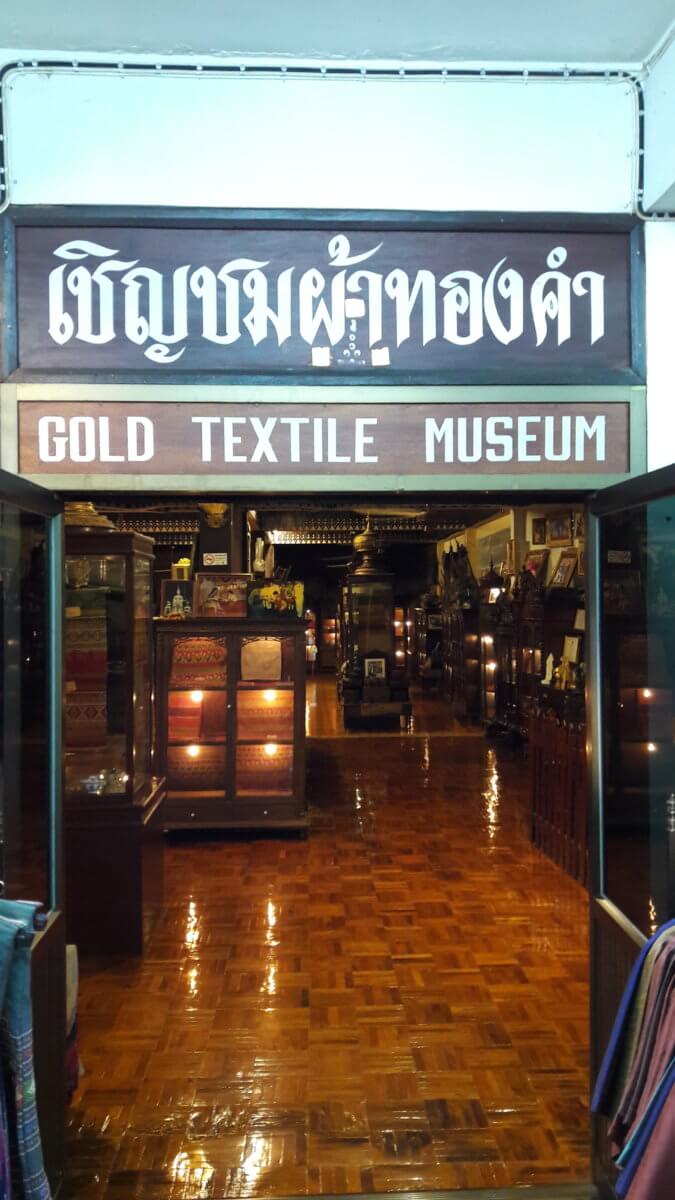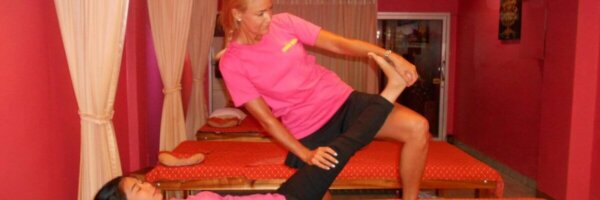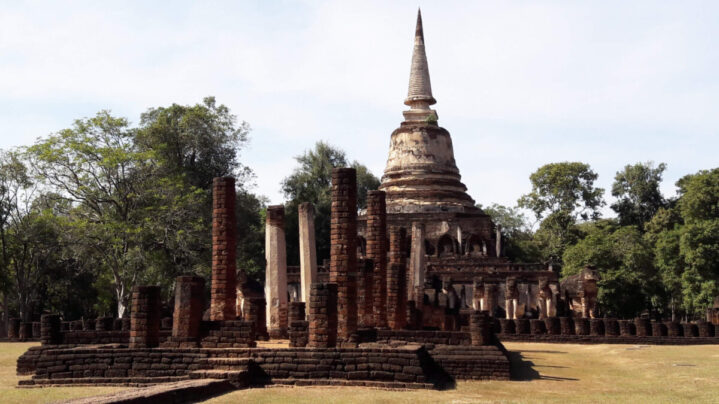
Sukhothai: UNESCO World Heritage City
Historical city of Sukhothai
After residing in Thailand for thirty years, I finally fulfilled my dream to visit Sukhothai. I have often been told by my Thai friends, “If you enjoy visiting Ayutthaya which is only one hour drive from Bangkok, you are going to fall in love with Sukhothai.” And, they are perfectly right. The most historically significant and splendid temple ruins are inside the Sukhothai Historical Park and nearby Si Satchanalai Historical Park. Sukhothai and associated cities, namely Si Satchanalai and Kamphaeng Phet were declared the 574th UNESCO World Heritage in 1991.
Located over 400km from Bangkok with a five hours drive, this partly explains the reason for less foreign visitors without the convenient transportation. Frankly admitting that the current Covid situation has encouraged everyone like me to appreciate domestic travelling. I am totally enchanted by the rustic lifestyle of what Sukhothai offers as a quiet rural city in Thailand. Given the opportunity of a long weekend stay, one will not be disappointed! Sukhothai worth’s deserved as a UNESCO World Heritage city.
Cradle of Thai civilisation
The Sukhothai Kingdom (1238-1438) was considered as the cradle of Thai civilisation, with Sukhothai city as the first capital of Siam. “Sukhothai” means “the dawn of happiness” which launched the birthplace of Thai art, architecture and language. The kingdom enjoyed 200 years of peace and prosperity until the Ayutthaya Kingdom annexed it.
Under King Ramkhamhaeng the Great (1239 – 1317), the second ruling monarch of the Phra Ruang dynasty, the Ceylonese school of Theravada Buddhism was established as the state religion. Thai alphabets were documented from ancient Khmer scripts and an administrative system for the government was set up. It was marked as golden period for Siamese art and architecture.
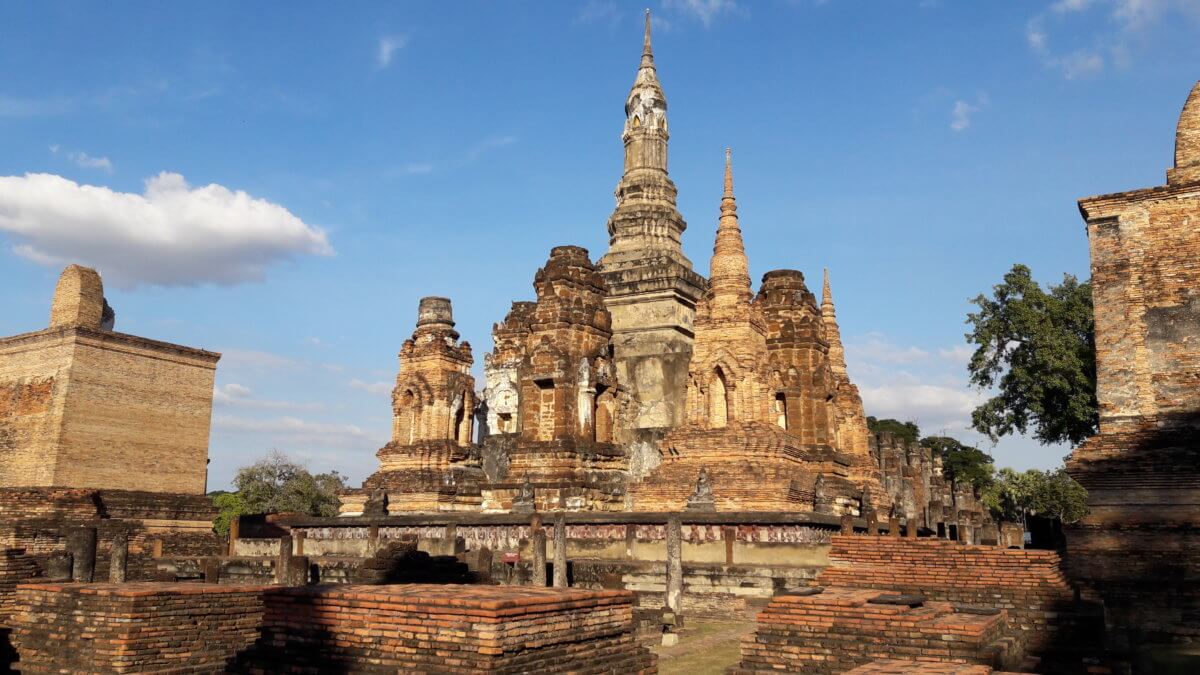
Sukhothai Historical Park
The Sukhothai Historical Park ruins are one of Thailand’s most impressive World Heritage sites. It is a great testimony of the glorious part of Thailand. The park covers an area of land totally 70 square kilometres with 193 ancient monuments, including 60 ancient monuments inside the town walls, 27 ancient monuments outside the town walls in the North, 37 ancient monuments outside the town walls in the South, 19 ancient monuments outside the town walls in the East and 50 ancient monuments outside the town walls in the West.
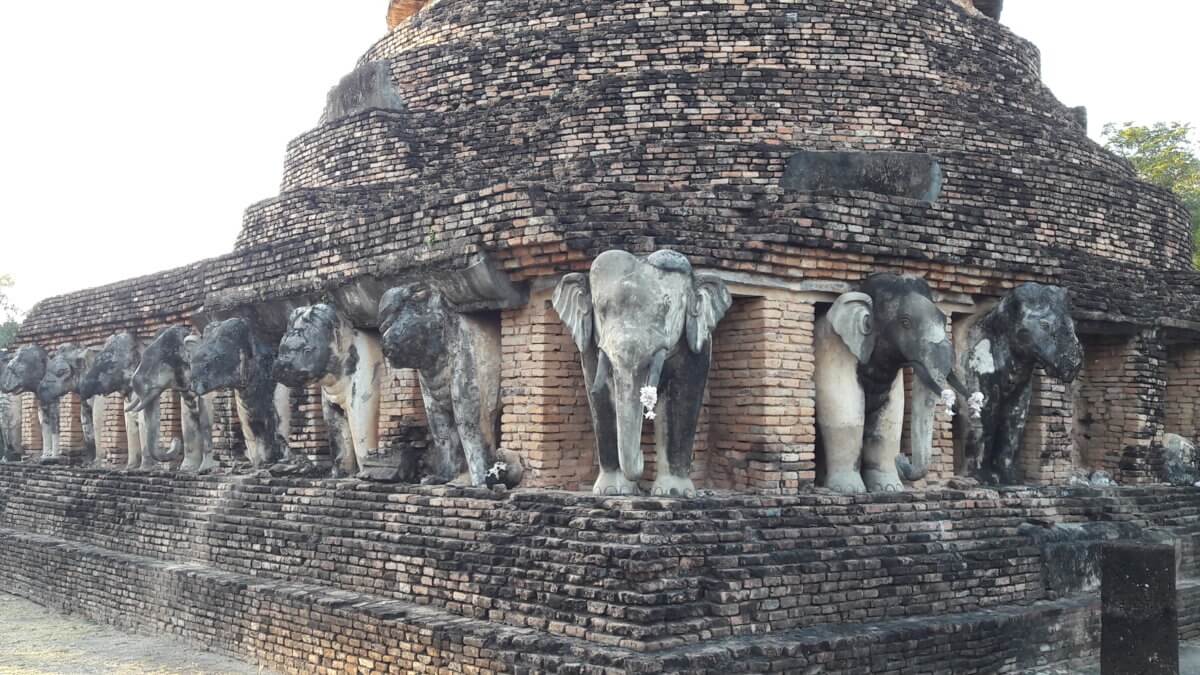
In terms of visiting the whole compound, the ground is divided into three separate but adjoining areas. Most visitors concentrate in the central area. I found the most amazing site in the North with Wat Si Chum. The roofless mondop building enshrines a huge Sukhothai style Buddha image named Phra Achana (translated as “He who is not frightened”). It is the largest Buddha image in Sukhothai measuring 15 metres high and 11 metres wide. The Sukhothai style image wearing a serene facial expression occupies the total space of the mondop’s interior. At the center of the mondop is an opening diminishing in size towards the top through which the image can be seen from the outside. Local people also refer this amiable image as “Speaking Buddha.
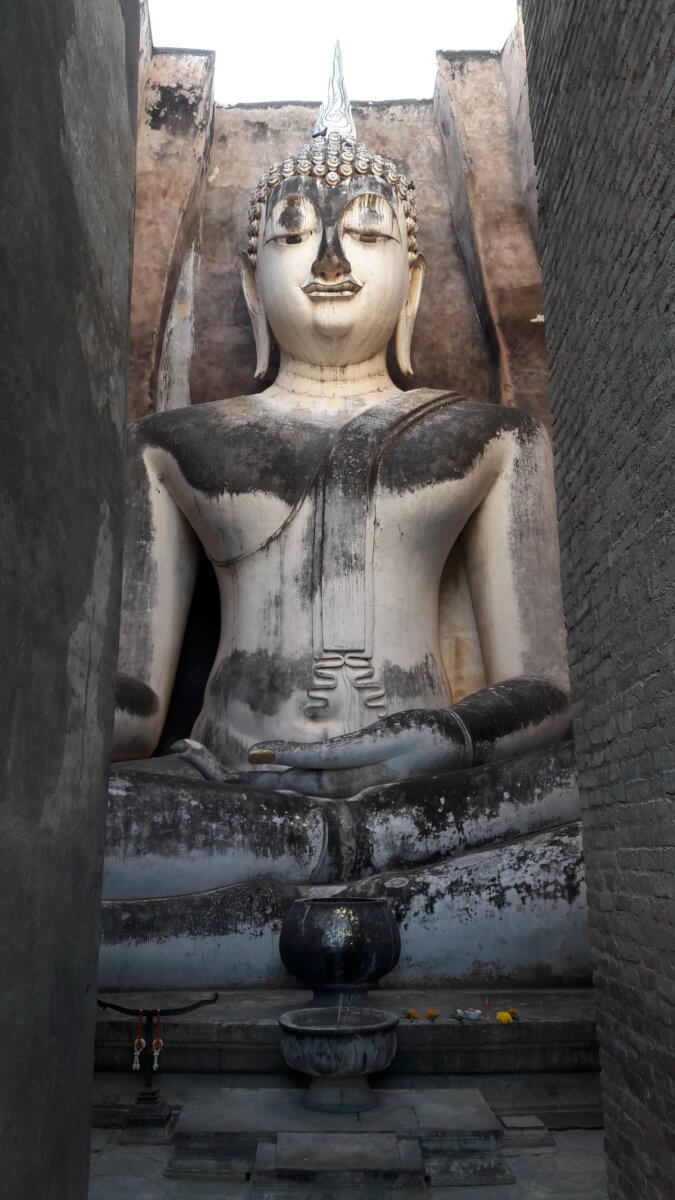
The architecture of Sukhothai temples is most typified by the classic lotus-bud chedis, featuring a conical spire topping a square sided structure on a three tiered base. Generally known as the Sukhothai style, these lotus-bud” chedis, brick-over-stucco construction techniques present the Buddha images with a signature graceful form. Some sites exhibit other rich architectural forms introduced and modified during the period, such as bell shaped Sinhalese and double tiered Srivijaya chedi.
The grounds of the historical park are so expansive and I saw so many tourists renting bicycles to joyfully enjoy the scenery at their own pace. I hope my next visit to this beautiful historical park is during the Loy Krathong festival, as it is the most important festival of the year in Sukhothai. The local guide explained that during the Loy Krathong Festival, the Sukhothai Historical Park offers exceptional evenings with performances, ceremonies, monuments illuminations, entertainment, booths of all kinds of local products and food mixed with the famous krathongs, small rafts that people launch on the pounds of the park. The night ends with a light and sound and fireworks on the pound in front of Wat Sa Si.
Ramkhamhaeng National Museum
The National Museum was built for history and archaeology aspect to honour King Ramkhamhaeng the Great, the King of Phra Ruang Dynasty of Sukhothai. The Ramkhamhaeng National Museum was officially opened in 1964 for over 50 years. It is located inside the Sukhothai Historical Park. The museum displays detailed exhibition on “Sukhothai: the Past and the Present.” A replica of the famous Ramkhamhaeng inscription, said to be the earliest example of “Lai Sue Thai”, the Thai letter of the alphabet, is kept here among an impressive collection of Sukhothai artefacts.
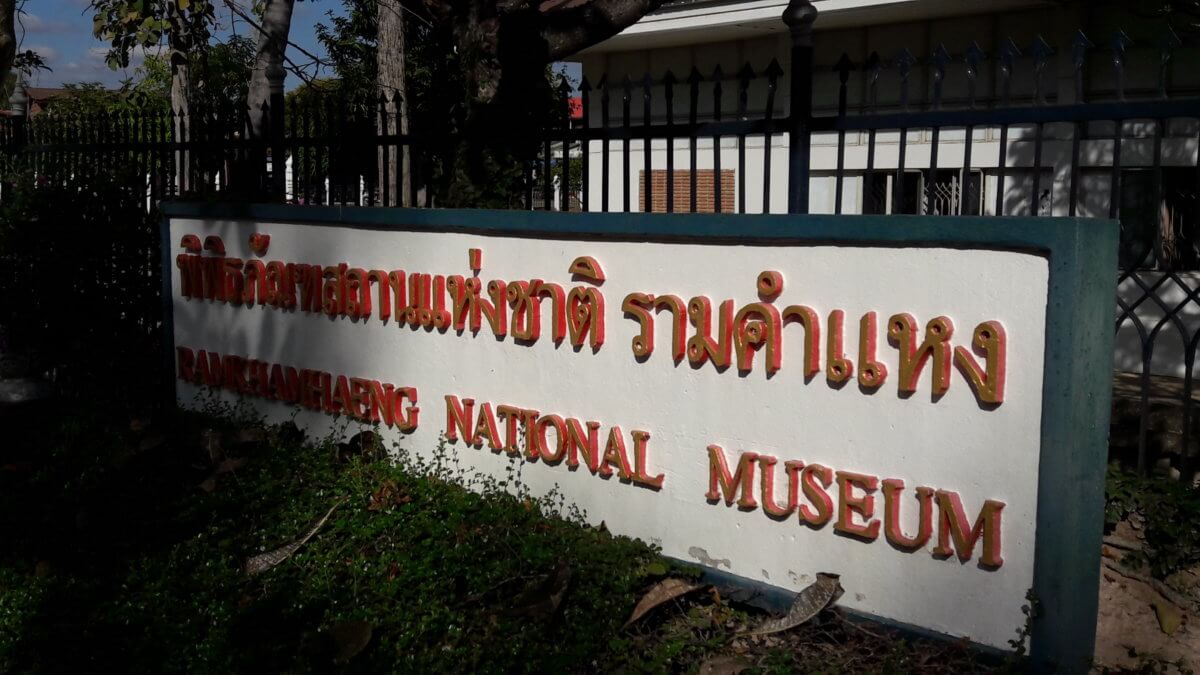
Museum 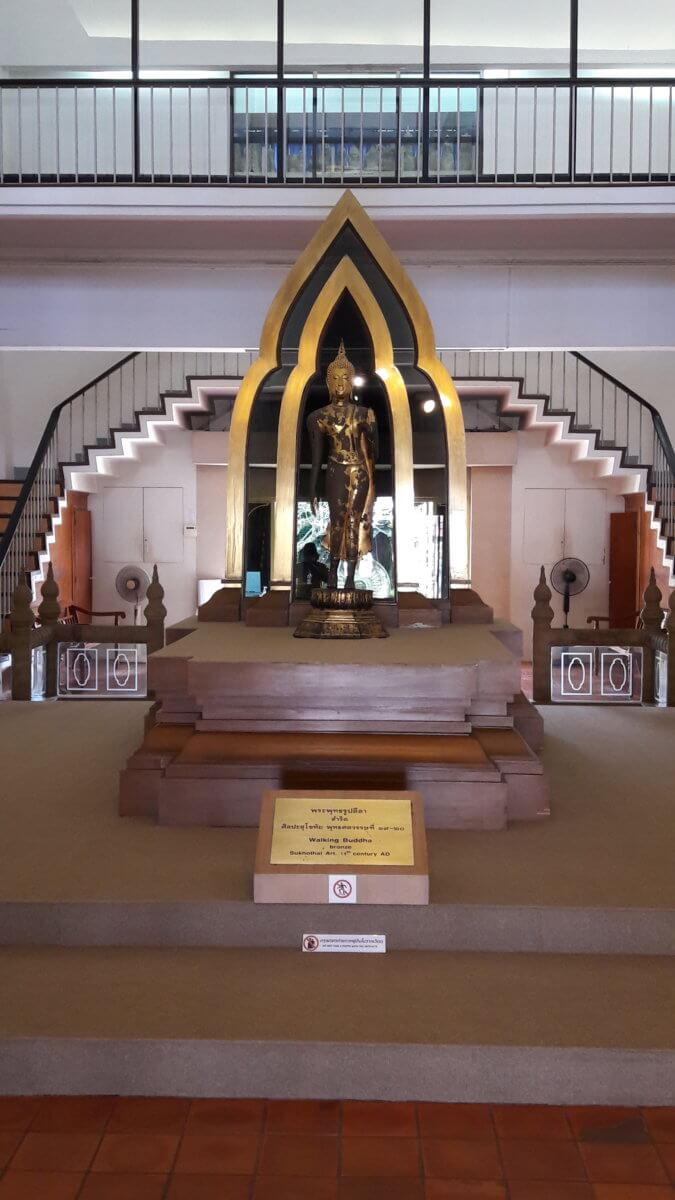
Museum
Si Satchananalai Historical Park
Less than one hour drive from Sukhothai, we spent another day to explore Si Satchanalai. With the total area of 45 square kilometres, this historical park extends over 4 sub-districts including Si Satchanalai, Sara Chit, Nong O and Tha Chai. Its ancient monuments are entirely located in the district of Si Satchanalai. The ruins here are just as amazing as in Sukhothai and thoroughly well kept.
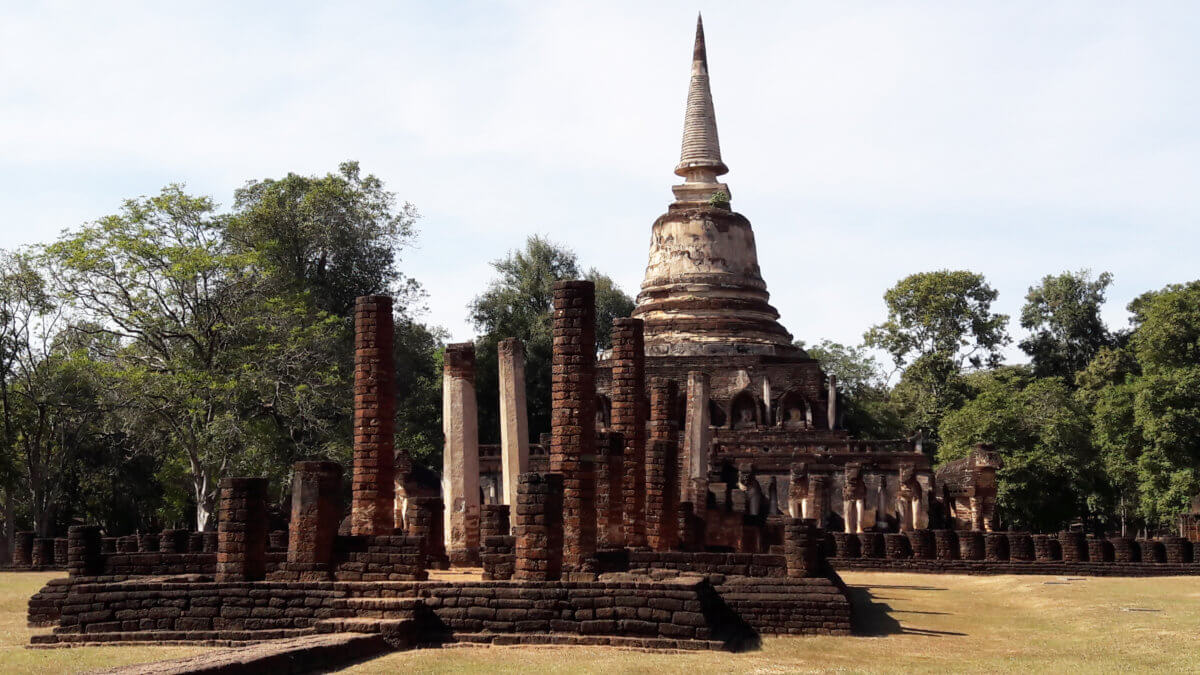
Sawankhalok
Together with Sukhothai, Si Satchanalai grew from a rural area to an urban centre. According to a stone inscription, Si Satchanalai of Sukhothai had been formally known as Chaliang. When Sukhothai was annexed and Ayuthaya became the capital of the Kingdom of Siam, Si Satchanalai was renamed as Sawankhalok, which was regarded as an outer town. In 1991, UNESCO as World Cultural Heritage together with Sukhothai and Kamphaeng Phet designated the ancient town of Si Satchanalai.
Earlier in 2019, several artists from around Thailand and the ASEAN region were invited to Sawankhalok to create street art along a stretch of road near the town. Sawankhalok Walking Street Art has drawn many curious tourists.

Sangkhalok Ceramics
Sangkhalok ceramics are ancient Thai traditional ceramic ware specifically derived from Sukhothai kingdom period. The pottery is made in very fine ceramic and glazed signature green olive colour. The green exquisite pottery making has also been known as “Celadon”. There is a small museum called Sangkhalok Ceramics Conservation and Study Centre, which is worth a visit.
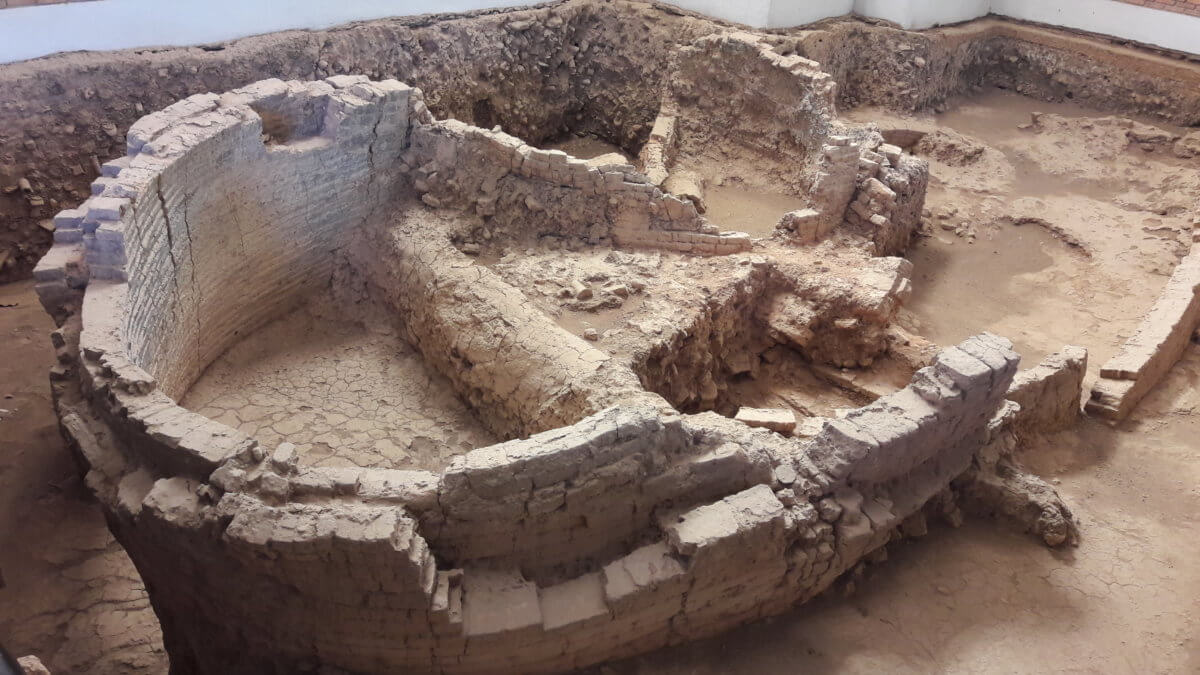
Ceramic 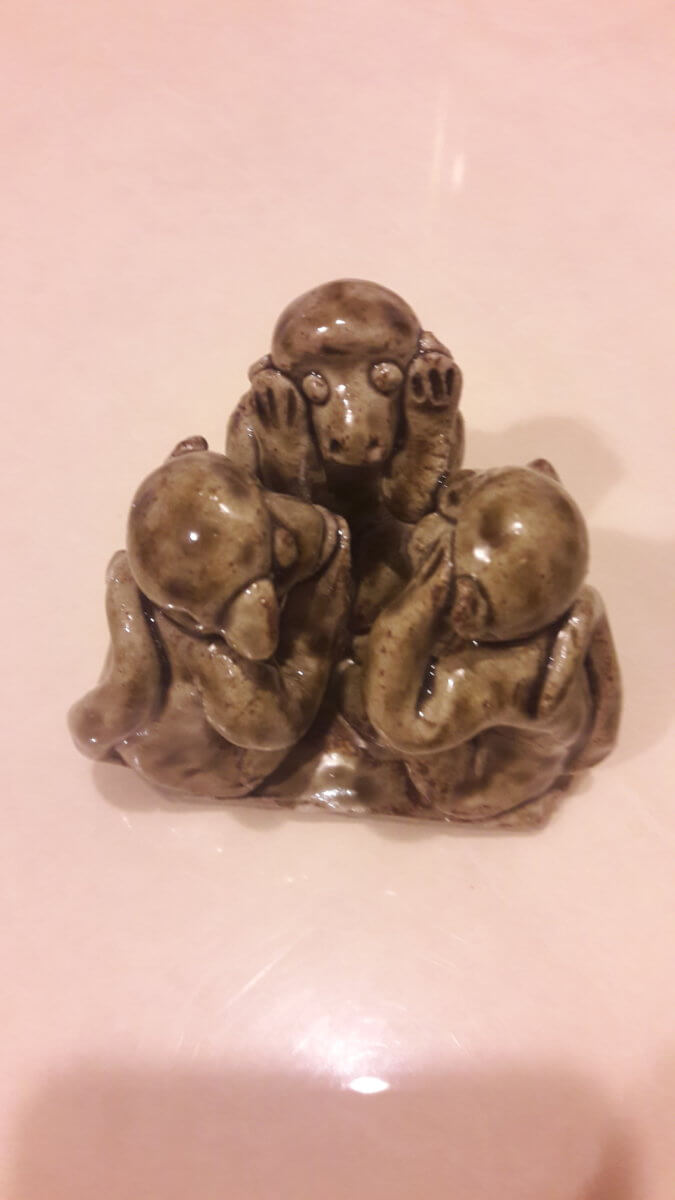
Ceramic
Sukhothai noodles
One of the popular street foods and unique to the province is Sukhothai noodles. The main difference between Sukhothai noodles and regular Thai noodles is the ingredients. Sukhothai noodles are always served with thin rice noodle with sliced roasted pork, to be accompanied with green beans, small pieces of salted turnip and ground peanut. The taste is slightly sweet and sour because the last touch is the addition of palm sugar, dried chilli and lime.

A trip is not completed without shopping for some souvenirs to take home. I picked up a few pieces of Sangkhalok ware with simple designs under their greyish blue/green matte glaze for our friends. Sukhothai is well known with the gold and silver jewellery with its exclusive design. Colourful embroidered textiles are widely available at a much affordable than in Bangkok. For many places, we will feel that one visit is enough in a lifetime, it will definitely not in my case with Sukhothai. As said earlier, I wish to experience Loy Krathong festival at Sukhothai Historical Park, perhaps in my Thai traditional outfit!
